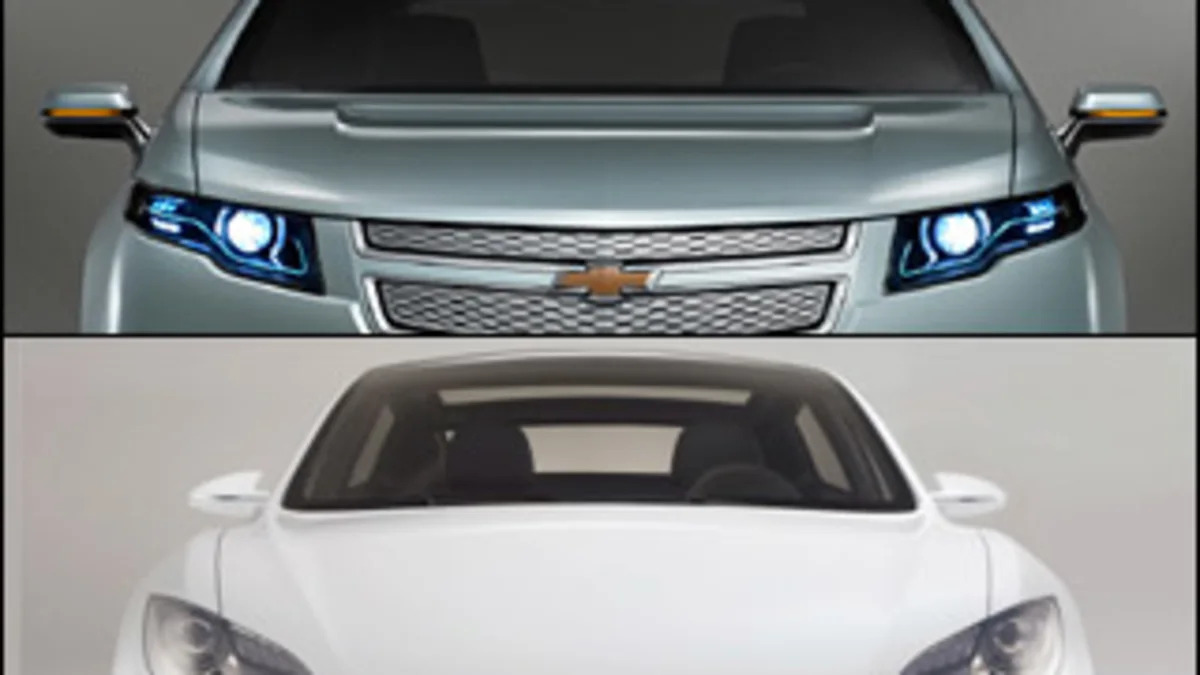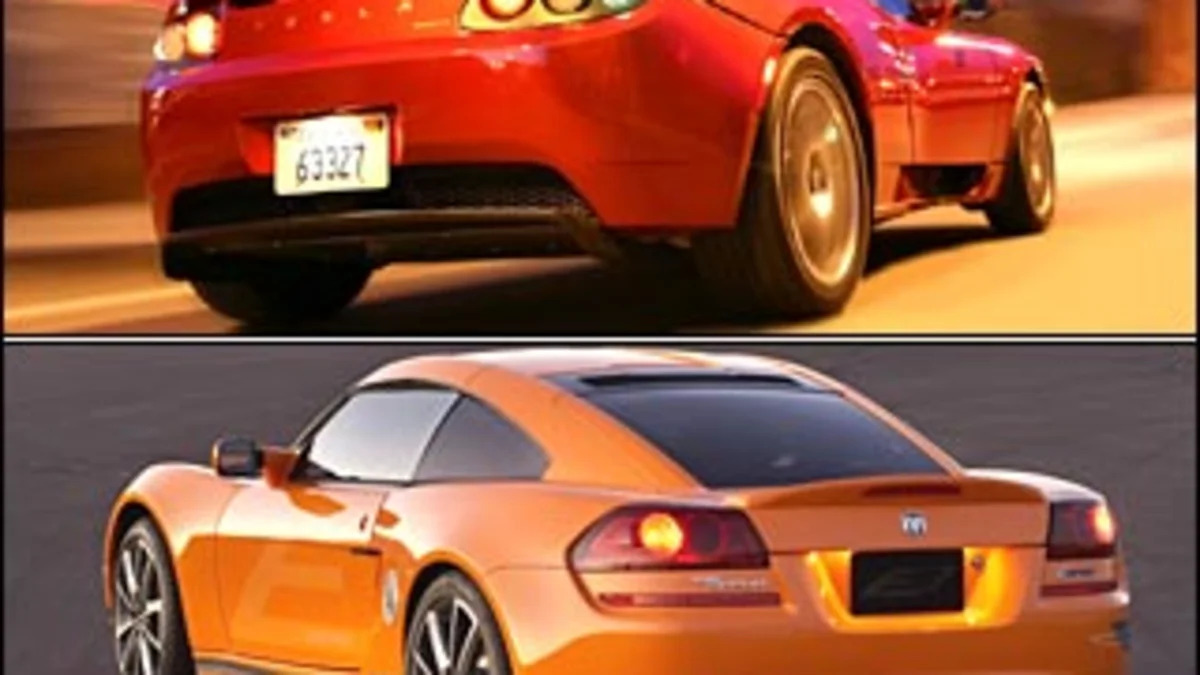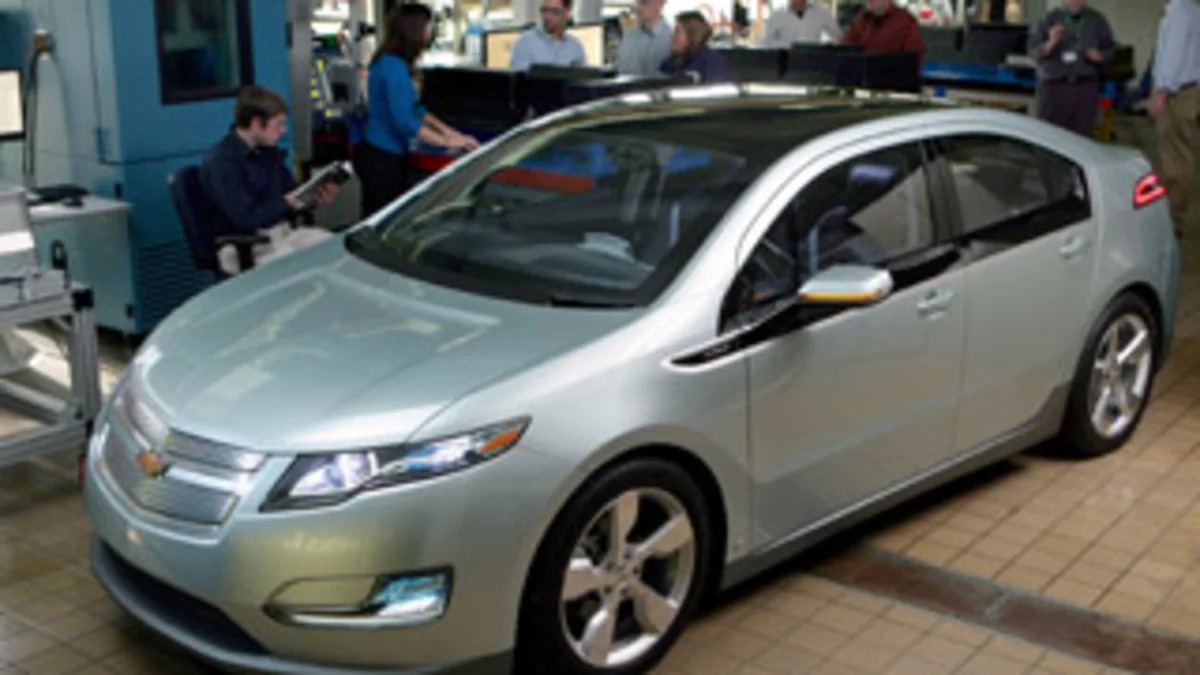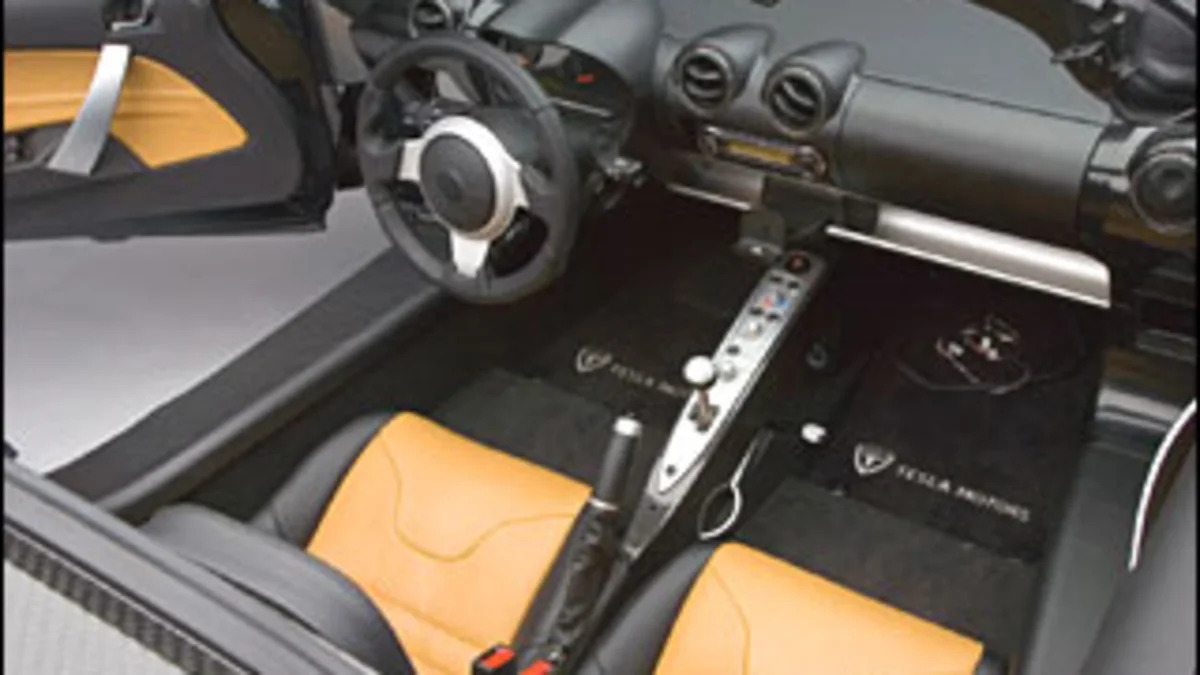100+ MPG Cars: Six Cars You'll Drive In The Future
Dec 3, 2009

-

Zero Emissions, Incredible MPGs
Not so long ago, car makers engaged in what could be described as a "horsepower war." The race was on to reach massive power levels -- from 300 to 400 and 500 horsepower. This race started in the 1960s, took a nap during the fuel crisis of the 1970s, but roared back over the last 10 years as retro designs became en vogue and baby boomers wanted more, more and more. The problem? While fun to drive, the world changed. Some say that the new war will take the form of efficiency -- in other words, a "mileage war." Now the focus could be "more for less," if you will.- Research Electric and Hybrid Cars
- Hybrid Cars
- Future Hybrids
- Research New Cars
-
- Image Credit: GM
What Is The New MPG Goal?
While the best-selling hybrid car, the Toyota Prius, gets a combined 50 MPG, the number that seems to be on everyone's mind is 100 MPG. That simple, three-digit figure might very well be the first important beachhead in the forthcoming mileage wars. Who will get to 100 MPG first?
Ironically, when we attain 100 MPG we likely won't be talking about fuel at all -- after all, it's difficult to measure electricity in gallon form; the EPA tells us that one gallon of gasoline has the "energy equivalent" of 82.049 kilowatt hours per gallon. Nerd alert! Forget the fancy numbers and just remember this: while gasoline and electricity are different, they both provide a vehicle with the same thing -- energy. How we measure that might change in the future (some say cost per mile might be the new metric we use). The part we do know today is that it's almost impossible to get over 100 MPG out of a traditional gas or diesel engine if it's driven in typical conditions by a typical driver. To get over 100 MPG, you have to think about moving away from gasoline altogether: electric power is the future.
Over the next few slides we'll introduce you to the vehicles that will get over 100 MPG (or whatever mumbo jumbo equivalent of kilowatt hours you fancy). Check out our list.- Research Electric and Hybrid Cars
- Hybrid Cars
- Future Hybrids
- Research New Cars
-
- Image Credit: GM
Chevy Volt
Range: 40 miles on electric power; a few hundred miles with range extender
Available: Late 2010 ($40,000-$50,000 is the rumored price)
Despite GM's troubles, the company is charging ahead with Volt development. In June 2008, the GM Board of Directors approved the Chevrolet Volt program and Voltec propulsion system for production starting in late 2010. Recently the company announced a city mileage figure of 230 MPG, but skeptics believe that number might not be consistent over the full range of driving (the number is believed to be a blend of the Volt's pure electric driving and its small gas range-extender engine).- Research More
- GM Chevy Volt
- Future Hybrids
- Research New Cars
-
- Image Credit: Nissan
Nissan Leaf
Range: 100 or so miles miles on electric power
Available: Late 2010 ($TBD)
Nissan isn't known for its leadership in hybrids -- its Altima hybrid sedan was somewhat late to the party and it isn't even for sale in all 50 states. Looking to change this, Nissan recently announced bold plans for its Leaf electric car, a 5-passenger vehicle that will run on electric power alone -- no gasoline will be used (hybrid cars use both electric power and a fuel source to run an engine). The range of this vehicle is said to be about 100 miles in average conditions.- Research More
- Nissan Leaf Photos
- Future Hybrids
- Research New Cars
-
- Image Credit: Tesla Motors
Tesla Roadster
Range: around 240 miles on electric power
Available: Now ($109,000)
A sports car and a green car need not be mutually exclusive. Finally, a sports car exists without the guilt of exhaust emissions and poor fuel economy. The 2009 Tesla Roadster is an electrically-powered, two-seat, open-top, rear-drive sports car. It does not have an internal combustion engine and therefore uses no gasoline and produces no emissions. Its lithium ion batteries are recharged with electricity in your home, and an optional Mobile Connector allows you to charge from any available 110v or 220v electrical outlet. But this is not a golf cart - its acceleration time and handling rivals many supercars.- Research More
- Tesla Roadster Overview
- Future Hybrids
- Research New Cars
-
- Image Credit: Tesla Motors
Tesla Roadster
Range: around 240 miles on electric power
Available: Now ($109,000)
If the Roadster looks familiar to you, you might be British (we're not kidding). The Roadster is largely based on the small, light Lotus Elise sports car. While that might sound like a curious platform on which to build an electric car (indeed, many have said as such), it's actually quite brilliant. If you think about it, Lotus already made the car fun to drive. All Tesla had to do was drop in the batteries and put its badge on the hood. Simple, right?
Well, it's not that simple. The workings of an electric car system (to say nothing of the additional weight and the rather large battery pack being fit into a very, very small car) are not a plug-and-play sort of installation. Tesla worked hard for years to get its roadster ready for public consumption. It's only this year been ready to be sold in greater numbers (and even then the vehicle isn't a true volume product).- Research More
- Tesla Roadster Overview
- Future Hybrids
- Research New Cars
-
- Image Credit: Tesla Motors
Tesla Model S
Range: around 300 miles on electric power
Available: 2011 ($55,000-$60,000)
To say nothing of its two-seater formation, the Tesla Roadster's price of about one hundred thousand dollars is likely out of the average buyer's range. Paradoxically, there will soon be a much more user-friendly version of the Tesla Roadster...for half the price. Yes, you read that right. Tesla's next model is set to be the Tesla Model S, a sumptuous sedan that should carry five passengers in green comfort.- Research More
- Tesla Roadster Overview
- Future Hybrids
- Research New Cars
-
- Image Credit: Tesla Motors
Tesla Model S
Range: around 300 miles on electric power
Available: 2011 ($55,000-$60,000)
The secret sauce of the Tesla Model S could be that it's set to become one of the largest pure electric cars for sale in the U.S. The Model S not only carries five passengers, but it's also capable of seating an additional two children, making it perhaps the world's only seven-passenger sedan (and certainly the world's only seven-passenger electric sedan). Will size matter for an electric car? You bet. Electric cars can only go mainstream if they become as useful (or, hopefully, moreso) than the traditional cars they replace.- Research More
- Tesla Roadster Overview
- Future Hybrids
- Research New Cars
-
Dodge Circuit EV
Range: around 150 miles on electric power
Available: Unknown ($TBD)
A vehicle that will surely revive the tarnished image of a great American brand is the Dodge Circuit EV, a small sports car that carries the brute aesthetic that the company has become known for. The Circuit (a cute name given the technology, don't you think?) promises the sort of eye-popping performance that is typical for an electric vehicle: 0-60 in under five seconds and a 13-second quarter mile. Those sorts of figures are typically reserved for the high-priced sports cars found in posters hanging on the bedroom walls of 13-year-old boys.- Research More
- Dodge Vehicles
- Future Hybrids
- Research New Cars
-
- Image Credit: BMW Group
Mini-E
Range: around 150 miles on electric power
Available: Now in select markets ($850/month lease; eventually rumored to be $35,000)
Mini, that tart little British brand owned by BMW, might be one of the earliest to the market with a true electric vehicle. The vehicle is actually already available (although if you weren't part of the 500-unit test market in select cities, you'll have to wait for the car to come to market in a larger number after a few years). That's the good news. The bad news? It's $850 per month in a lease payment and a home charging unit will set you back $1500 or more.- Research More
- Mini Vehicles
- Future Hybrids
- Research New Cars
-
- Image Credit: BMW Group
Mini-E
Range: around 150 miles on electric power
Available: Now in select markets ($850/month lease; eventually rumored to be $35,000)
But that's typical for a beta launch; after all, Mini has to defray the costs of a very small program using a very expensive technology. Mini's "E" tops out at about 95 mph and has a range of about 150 miles, all pumped out from a series of lithium-ion batteries. Quick charges take about three hours from a 240-volt outlet, while a 110-volt, 12-amp outlet can take as long as a day to get to full charge.- Research More
- Mini Vehicles
- Future Hybrids
- Research New Cars









